UK’s new advanced aircraft

On 7 March the (UK) Ministry of Defence (MOD) announced contracts worth £167 million to upgrade and build new facilities at RAF Marham (Norfolk, East Coast), the future home of the UK’s F-35B Lightning II squadrons.
These contracts, which will create 300 new employment opportunities, will allow for the addition of maintenance, training and logistics facilities to the air station in the East Anglian region, all of which will be dedicated to the next generation fighter aircraft.
OFCOM inviting comments on space spectrum strategy

OFCOM is the (UK) Independent Regulator and Competition Authority for the UK communications industries. Readers may wish to be aware that they are invited to comment on proposed Space Spectrum Strategy which covers the use of spectrum by the satellite and space science (including earth observation) sectors. These sectors already deliver important benefits to UK citizens and consumers, such as broadcast TV, global positioning, communications to ships and aircraft, satellite imagery and information about the UK climate.
As one can imagine there is potential for greater benefits in the future and OFCOM wants to make sure it is focusing efforts on the issues that are expected to unlock the biggest benefits.
Take a look here.
Hydrographic concerns for modern-day large vessels

Marsh calls for a higher priority to be given to hydrographic survey work to protect mega-ships at sea – Marsh, a global leader in marine insurance broking and risk management, has issued an industry information report that highlights the inherent risks involved in operating ever-larger ships in poorly surveyed waters: Plumbing the depths: Hydrographic Concerns for Modern-Day Large Vessels. With the Suez Canal axis now open and the expanded Panama Canal system soon to be complete, more and more huge ships will be navigating parts of the world that have never seen so many large vessels before.
In this new research and briefing report Marsh takes a look at the lack of adequately hydrographically surveyed waters internationally and the implications this could have for these new vessels.
USCG Atlantic coast port access route study
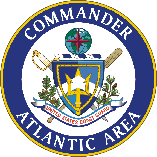
In May 2011 the US Coast Guard announced that it was conducting a Port Access Route Study of the entire East Coast of the United States and participation by interested parties was encouraged. It was critical that the Coast Guard received input from maritime stakeholders to determine whether existing and projected uses of the waterways, including the effects of new routeing measures, may have on users.
The study is necessary to determine if new routeing measures or changes to existing routeing measures were necessary to balance the multiple uses of the waterway, while ensuring the safety of navigation.
MAIB report on Hoegh Osaka

At 2109 on 3 January 2015, the pure car and truck carrier Hoegh Osaka was rounding West Bramble buoy in The Solent (south coast of England, approach to the port of Southampton) when it developed a significant starboard list causing some cargo shift and consequent flooding. With the list in excess of 40°, the ship lost steerage and propulsion, and subsequently drifted onto Bramble Bank, grounding at 2115.
Hoegh Osaka had sailed from the port of Southampton, bound for Bremerhaven, at 2006. A pilot was embarked and there were 24 crew on board. Following the accident, all crew were successfully evacuated from the ship or recovered from the surrounding waters. There was no pollution. A major salvage operation successfully refloated Hoegh Osaka and it was subsequently taken to a safe berth in Southampton on 22 January.
The (UK) Marine Accident Investigation Branch (MAIB) has now published a report into the investigation of the listing, flooding and grounding of this pure car and truck carrier (PCTC).
A safety flyer has been produced highlighting three key safety lessons arising from the accident which the Chief Inspector of Marine Accidents urges the industry to take forward.
Strategic plan promotes sustainable future for maritime professionals
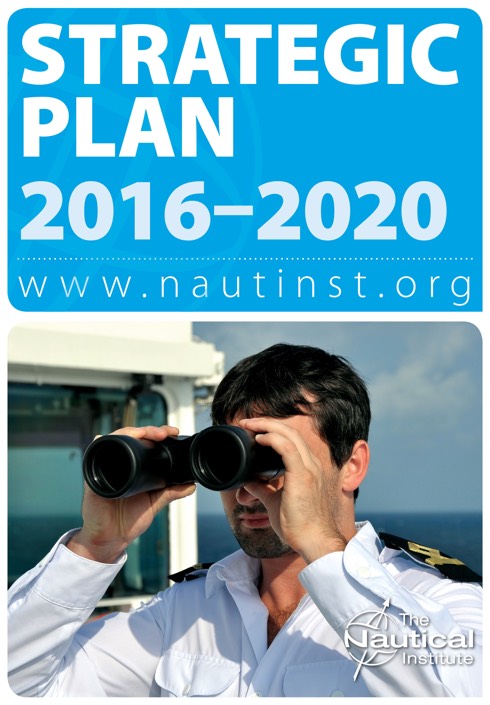
Sustainability features strongly in The Nautical Institute’s latest Strategic Plan, which was published on 11 March and will run to 2020. It incorporates the views of 1,400 members who responded to a call to help guide the Institute’s work.
Captain Robert McCabe (pictured), President of the Institute, said the organisation needed to plot its course in a challenging world where there were ‘more sensitivities, more regulations, more accountability, more technology, more trade, more ships, less water space, and greater competition from other industries offering opportunities to bright young people.’
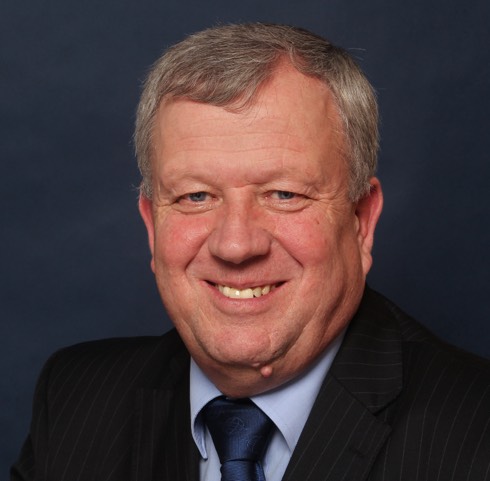
He pointed out: ‘Sustainability can also apply to professions. A cornerstone of sustainability is knowledge, and knowledge in a rapidly changing environment can only be gained by sharing. The sharing of knowledge is one of our core foundations and the Institute has been distributing knowledge and best practice since its inception.’
Innovation in maritime navigation
A report on the conference at Trinity House, London hosted by the General Lighthouse Authorities of the UK and Ireland, the Royal Institute of Navigation and the Knowledge Transfer Network.
Before introducing the programmed sessions Rear-Admiral Nick Lambert invited the delegates to hold 3 thoughts:
– That the day was not intended to be a ‘give GNSS a kicking’ event. Rather, it should aim to address how new technology might be used to make GNSS even better and more reliable.
– Given that the maritime environment is uniquely difficult and one where ‘backing up’ systems has been, and should be, a sine qua non, the marine user community is well placed to be a ‘bellwether’ for the management of wider societal need for the provision of resilient systems.
– At least part of the issue is the difference in outlook between the new generation of ‘digital natives’ and the present generation of practitioners and
those involved in preparing requirements and standards, who might be termed the ‘transitional generation’.
Innovation in maritime navigation
A report on the conference at Trinity House, London hosted by the General Lighthouse Authorities of the UK and Ireland, the Royal Institute of Navigation and the Knowledge Transfer Network.
Before introducing the programmed sessions Rear-Admiral Nick Lambert invited the delegates to hold 3 thoughts:
– That the day was not intended to be a ‘give GNSS a kicking’ event. Rather, it should aim to address how new technology might be used to make GNSS even better and more reliable.
– Given that the maritime environment is uniquely difficult and one where ‘backing up’ systems has been, and should be, a sine qua non, the marine user community is well placed to be a ‘bellwether’ for the management of wider societal need for the provision of resilient systems.
– At least part of the issue is the difference in outlook between the new generation of ‘digital natives’ and the present generation of practitioners and
those involved in preparing requirements and standards, who might be termed the ‘transitional generation’.
Innovation in maritime navigation
A report on the conference at Trinity House, London hosted by the General Lighthouse Authorities of the UK and Ireland, the Royal Institute of Navigation and the Knowledge Transfer Network.
Before introducing the programmed sessions Rear-Admiral Nick Lambert invited the delegates to hold 3 thoughts:
– That the day was not intended to be a ‘give GNSS a kicking’ event. Rather, it should aim to address how new technology might be used to make GNSS even better and more reliable.
– Given that the maritime environment is uniquely difficult and one where ‘backing up’ systems has been, and should be, a sine qua non, the marine user community is well placed to be a ‘bellwether’ for the management of wider societal need for the provision of resilient systems.
– At least part of the issue is the difference in outlook between the new generation of ‘digital natives’ and the present generation of practitioners and
those involved in preparing requirements and standards, who might be termed the ‘transitional generation’.
ICS launches new bridge procedures guide
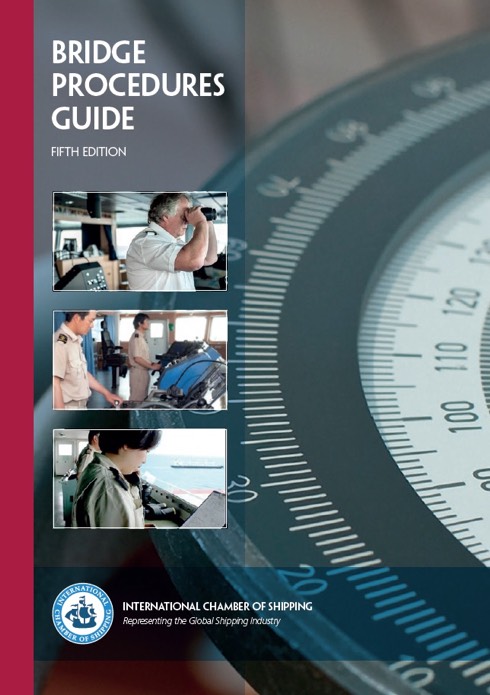
The International Chamber of Shipping (ICS) has published a new edition of the ICS Bridge Procedures Guide, widely acknowledged as the principal shipping industry guidance on best practice for safe navigation, which is used by seafarers and training institutes worldwide.
This fifth edition, it was reported on 1 March, has been comprehensively revised by an expert working group nominated by ICS’s member national shipowners’ associations, and replaces the previous edition published in 2007.
Inmarsat C marks quarter century saving lives at sea
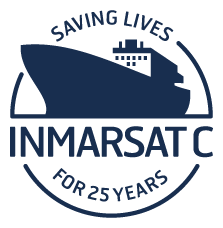
On 1 March 2016 INMARSAT marked the 25th anniversary of Inmarsat C by revealing that more than 600 distress alerts from vessels in urgent need were broadcast over the service in 2015. The disclosure demonstrates how the decision made by IMO administrations requiring all ships of more than 300 gross tons to be fitted with a Global Maritime Distress and Safety System (GMDSS) remains pivotal in protecting lives at sea. Inmarsat is the only safety services provider in the world approved to deliver GMDSS under the rigorous International Convention for the Safety of Life At Sea requirements.
Ronald Spithout, Inmarsat Maritime President, commented: ‘Over its lifetime, GMDSS has made the biggest single contribution to maritime safety since the advent of radio in 1899. We are immensely proud of Inmarsat C’s unparalleled contribution to GMDSS in the last 25 years. Thousands of lives have been saved and countless ships rescued as a result.’
There’s a video byte here, also on Inmarsat’s channel.
The ASM Handbook, a reliable guide for seamless collaborative airspace management
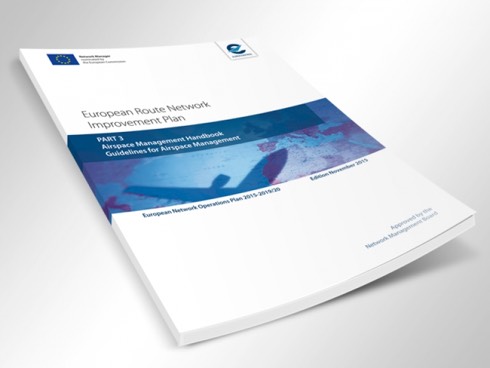
Early in February EUROCONTROL emphasised the importance of the ASM Handbook. Twenty years ago, a new page in ATM history was written: the Airspace Management Handbook, otherwise known as the ASM Handbook was first published. This is the reference guide for the application of the concept of the Flexible Use of Airspace (FUA) by civil and military airspace users.
Inmarsat, Global Marine Networks and Network Innovations deliver successful trial
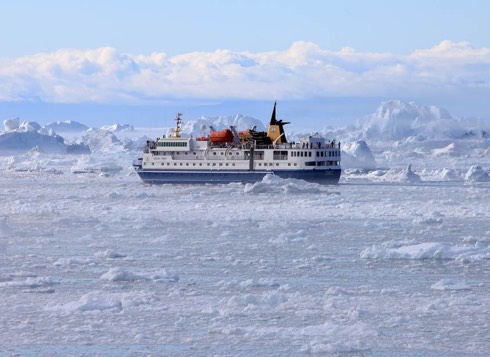
On 22 February Inmarsat together with Global Marine Networks and Network Innovations, announced the successful trial and subsequent commercial order for Fleet Xpress in Antarctic waters. Fleet Xpress had earlier been installed in the adventure cruise ship Ocean Nova (illustrated), and was reported to have delivered robust communications in one of the most hostile environments.
Beta testing of NavPac4 celestial navigation software

At the Royal Institute of Navigation, Small Craft Group (RIN SCG) members have been invited to participate in the beta testing of NavPac4, a new version of a celestial navigation software produced by HM Nautical Almanac Office (HMNAO).

EASA and Ukraine SAAU conclude a new working arrangement
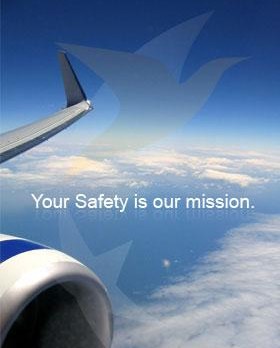
The agreement includes the extension of cooperation between the two authorities to air traffic management (ATM)/air navigation services (ANS) and aerodromes’ safety domains, where EASA will support the SAAU in its endeavours to implement the relevant EU legislation. It is understood, further, that the SAAU is thus now among 43 European civil aviation authorities cooperating with EASA on ATM/ANS matters.
ION 6th Autonomous Snowplow competition
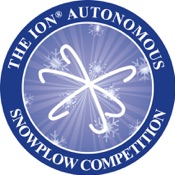
The (US) Institute of Navigation Satellite Division announced from Manassas, Virginia, on 17 February the winners of the 6th Annual ION Autonomous Snowplow Competition during the Saint Paul Winter Carnival. This event was held at Rice Park in downtown Saint Paul, Minnesota, in conjunction with the 130th Saint Paul Winter Carnival.
Sponsored by The ION Satellite Division and held in cooperation with the ION North Star Section, the ION Annual Autonomous Snowplow Competition is an international event open to college and university students, as well as the general public. It challenges teams to design, build, and operate a fully autonomous snowplow using state of the art navigation and control technologies to rapidly, accurately and safely clear a designated path of snow.
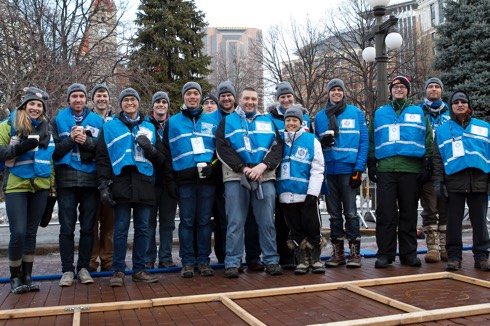
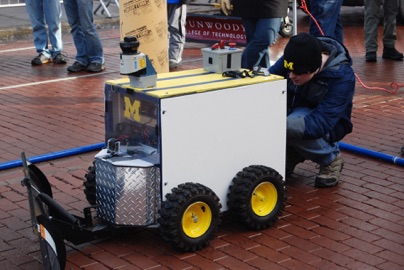
EGNOS protects GNSS timing
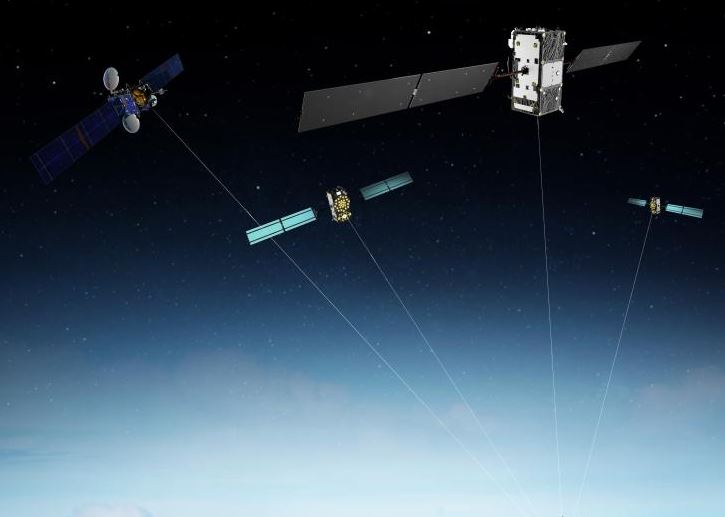
Earlier this month, the European GNSS Agency (GSA) announced that the EGNOS time service remained stable and properly synchronised to UTC time during a recent GPS timing anomaly on 26 January. That day users of the United States GPS system experienced timing issues.
During the GPS anomaly EGNOS remained stable and properly synchronised – proving just how important it is to have such a backup system after a number of
GPS satellites broadcast incorrect UTC correction parameters.
According to the US Air Force, the coordinated universal time message that was transmitted was off by 13 microseconds. During this anomaly EGNOS, which serves as an augmentation to the GPS, remained stable and properly synchronised to UTC.
US federal funding opprtunity
Readers are invited to inspect this pdf which contains an introduction to the program. This solicits from small businesses scientific and engineering related R&D proposals that respond to specific technical needs described in the annual Solicitation.
Readers are, further, invited to study carefully the opening pages of this document which outline the application method.
Of particular interest to the navigation community will be: Section 9.04.04 Single-Chip eLoran Receiver to be found on page 72.
ENC 2016 deadline extension

Due to numerous requests, the deadline for paper submission of the ENC 2016 has been extended by two weeks to 28 February 2016.
The 24th European Navigation Conference (ENC 2016), co-sponsored by EUGIN, Nordic Institute of Navigation, and IEEE Aerospace and Electronic Systems Society, will be held in the Finlandia Hall in Helsinki, Finland during the period 30 May 30-2 June 2016.
US ION fellowships and awards
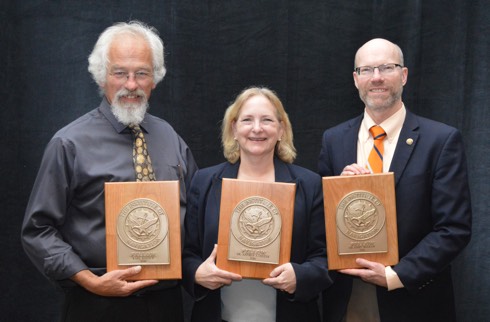
The (US) Institute of Navigation (ION) announced the recipients of the 2016 fellow memberships during the ION International Technical Meeting (ITM) and Precise Time and Time Interval Systems and Applications (PTTI) in Monterey, California held from 25-28 January. Election to Fellow membership recognizes the distinguished contributions of The Institute of Navigation members to the advancement of the technology, management, practice and teaching the arts and science of navigation; and/or lifetime contributions to the Institute.
The Institute of Navigation also announced winners of its 2015 Annual Awards at the ION International Technical Meeting. This Awards Programme is sponsored by The Institute of Navigation to recognize individuals making significant contributions or demonstrating outstanding performance relating to the art and science of navigation.
Tideland Signal Corporation acquired by Xylem Analytics
On 5 February marine aids to navigation manufacturer and service provider Tideland Signal Corporation announced that it has been acquired by Xylem Inc., a leading global water technology company dedicated to solving the challenging water issues. Tideland will now be part of the Xylem Analytics business and will stand side by side with brands such as YSI, SonTek and Aanderaa.
Seafarers invited to help manufacturers improve onboard design
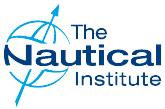

On 4 February the Nautical Institute and Comité International Radio-Maritime (CIRM) the principal international association for marine electronics companies) launched a joint initiative to improve the usability of navigation and communication technology in ships.
Speaking at the International e-Navigation Underway Conference in a vessel steaming Copenhagen-Oslo-Copenhagen, David Patraiko, Director of Projects for the Nautical Institute, and Richard Doherty, Chief Technical Officer for CIRM, announced the development of the CIRM User Feedback Forum.
It was recognised that the best way to achieve usability in a system, product or service is to ask users what they think at each stage of the design. This is the principle that underlies the concept of human-centred design (HCD). Applying HCD is a key goal of the International Maritime Organization’s eNavigation strategy.
The Navigator – Issue 11
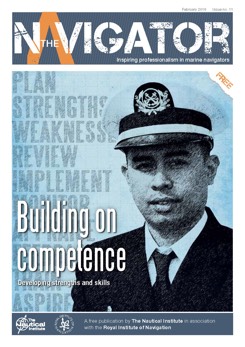
After a flag state has issued a certificate of competence, professionals still need to continue to train, learn and assess their performance. The latest edition of The Nautical Institute’s acclaimed magazine The Navigator examines how navigators can build on their basic competencies while at work. This was reported by the Institute on 2 February.
In this issue, Gilbert Maturan reveals how one maritime company, Teekay, helps its staff maintain competency and explains why it is essential if the mariner is to keep abreast of technical advances. The Nautical Institute also offers advice on why planning is a vital part of achieving greater competency.
The Navigator 11, and previous issues, may be downloaded from The Nautical Institute.
Britain’s new First Sea Lord
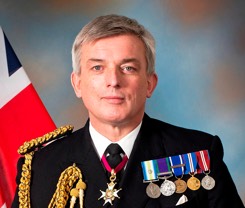
British Defence Secretary Michael Fallon confirmed on 29 January the appointment of a new First Sea Lord and Chief of Naval Staff. Vice-Admiral Sir Philip Jones KCB is to be promoted Admiral and appointed First Sea Lord and Chief of Naval Staff, in succession to Admiral Sir George Zambellas GCB DSC ADC DL in April 2016. Sir Philip is currently Fleet Commander and Deputy Chief of Naval Staff.
GPS ground system anomaly

On 28 January the US Air Force announced from the 2nd Space Operations Squadron at the 50th Space Wing, Schriever Air Force Base, Colorado, that verified users were experiencing GPS timing issues.
Further investigation revealed an issue in the Global Positioning System ground software which only affected the time on legacy L-band signals. This change occurred when the oldest vehicle, SVN 23, was removed from the constellation.
While the core navigation systems were working normally, the coordinated universal time timing signal was off by 13 microseconds, which exceeded the design specifications. The issue was resolved at 0610 MST, however global users may have experienced GPS timing issues for several hours.
